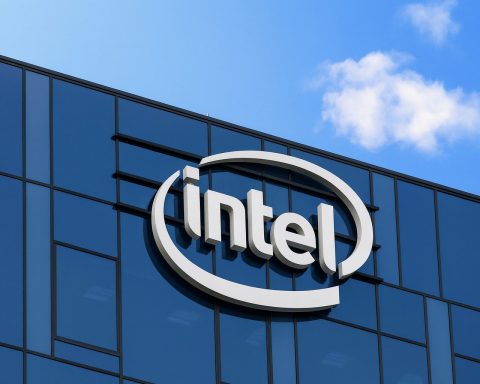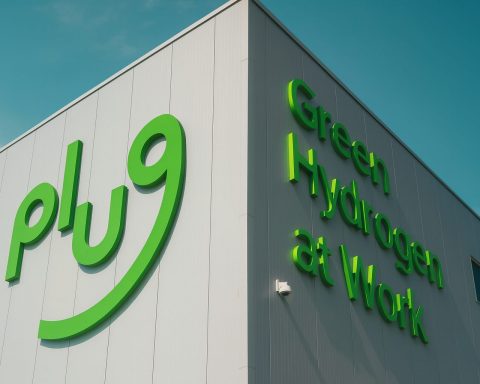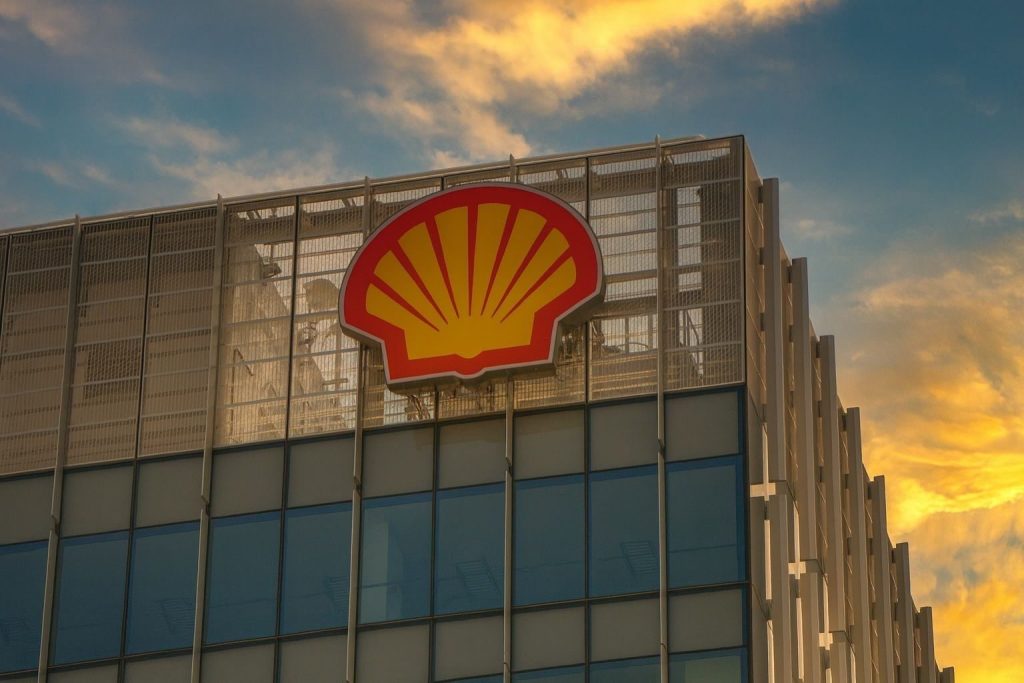Glencore Plc is back in the spotlight this Monday, 24 November 2025, as investors digest a string of developments spanning Chinese aluminum, stressed copper smelters, ESG scrutiny and a fresh bullish analyst note pointing to double‑digit upside.
On the same day that Glencore appears as a cornerstone investor in a blockbuster Hong Kong IPO, its share price is outperforming the FTSE 100, while the company remains at the center of debates over government subsidies and the future of copper refining in Canada and Australia. [1]
Glencore share price today: outperforming a rising FTSE 100
By late morning in London, Glencore’s own website showed its London‑listed shares trading at 341.40p, up 6.40p on the day (around +1.9%), with the Johannesburg line at ZAR 77.46, up 1.02 rand. Prices are delayed by around 10 minutes. [2]
A separate market note from Trading Economics/TradingView reports that the FTSE 100 rose for a third straight session on Monday, helped by miners and banks. Glencore was singled out as having gained “more than 2%” alongside other major resource names. [3]
In the specialist mining commentary, SP Angel’s daily “Market View” for Monday 24 November flags Glencore as up 2.9% on the day but still down 5.3% over the week, suggesting today’s move is part relief rally, part catch‑up after recent weakness. [4]
Put together, the price action underlines how quickly sentiment around Glencore can swing with commodity headlines – and today there are several.
Glencore backs Chuangxin’s blockbuster ‘green aluminum’ IPO in Hong Kong
One of the most eye‑catching Glencore‑related stories today is happening in Hong Kong.
Chuangxin Industries Holdings Limited (02788.HK), a leading integrated producer of alumina and electrolytic aluminum in China, made its debut on the Hong Kong Stock Exchange on Monday. The company:
- Offered 500 million shares globally (10% via Hong Kong public offering, 90% international)
- Priced the IPO at HK$10.99 per share, raising about HK$5.495 billion (roughly US$706–707 million)
- Saw its Hong Kong retail tranche oversubscribed by 447.2 times
- Closed its first day at HK$14.59, a jump of 32.76% over the offer price [5]
Crucially for Glencore watchers, Glencore AG appears among 17 cornerstone investors, alongside Hillhouse, China Hongqiao, Taikang Life and Mercuria. These cornerstone backers collectively subscribed about US$351 million, or nearly half of the total offering. [6]
Why this matters for Glencore
Chuangxin is positioned squarely in the “green aluminum” narrative:
- It runs an integrated “energy – alumina refining – aluminum smelting” ecosystem in Inner Mongolia and Shandong.
- In 2024 it reached about 84% alumina self‑sufficiency and 88% electricity self‑sufficiency, significantly above industry averages. [7]
- Several in‑house wind and solar plants already operate, with a target to lift the share of green power to over 50% by end‑2026. [8]
- Revenue has risen from RMB 13.49 billion (2022) to RMB 15.16 billion (2024), while net profit climbed from RMB 913 million to RMB 2.63 billion over the same period. [9]
With aluminum demand increasingly driven by EVs, solar, batteries and AI‑heavy data centers, commentators note that Glencore’s role as a cornerstone investor lines up with its push to emphasize “transition metals” alongside legacy coal assets. [10]
Glencore has not yet issued a dedicated press release on the Chuangxin IPO, but today’s trading pop for the new listing and the heavy oversubscription are likely to be seen as a vindication of its decision to anchor the deal.
China’s grip on copper: make‑or‑break benchmark talks with Glencore in the crosshairs
Another major narrative today is less celebratory.
A Bloomberg‑authored feature carried by The Japan Times under the headline “China’s grip on copper sets scene for make‑or‑break supply talks” warns that the pricing mechanism underpinning the global copper‑processing industry is under severe strain. [11]
Key points from that piece and related reporting:
- Treatment and refining charges (TC/RCs) – the fees miners pay smelters to turn concentrate into metal – crashed to record lows this year as Chinese smelting capacity outstripped mine supply. [12]
- Annual benchmark talks in Shanghai this week will set the tone for 2026 TC/RCs, with miners reportedly pushing for even tougher terms that could squeeze smelters further. [13]
- China’s dominant position has left smelters elsewhere “struggling to survive,” forcing governments to step in with support – including for Glencore assets. [14]
Mount Isa bailout: Glencore’s Australian copper lifeline
On 8 October 2025, Australia and Queensland announced a A$600 million (about US$395 million) bailout package over three years for Glencore’s Mount Isa copper smelter and Townsville refinery, aimed at keeping the operations open until at least 2028 and shoring up non‑Chinese refining capacity. [15]
The support followed months of lobbying in which Glencore argued that:
- Treatment and refining charges had fallen to their lowest levels in 25 years,
- Competitors in China and Indonesia benefit from heavy state support, and
- Losing Mount Isa and Townsville would weaken Western supply security for a key transition metal. [16]
Even with the bailout, Australian and industry media have highlighted how precarious the smelter’s economics remain, especially if a linked fertiliser plant at Phosphate Hill shuts and disrupts acid supply. [17]
Horne smelter in Canada: closure plans and ESG risks
Glencore’s copper‑processing headaches are not confined to Australia. A Reuters exclusive on 3–4 November reported that the company is planning to close its Horne smelter in Quebec – Canada’s largest copper metal operation – along with its Canadian Copper Refinery (CCR), citing environmental compliance costs and the hundreds of millions of dollars needed to modernise the facility. [18]
The story noted that:
- Combined, the Horne and CCR operations employ over 1,000 workers and produce more than 300,000 tonnes of copper metal annually, much of it exported to the US. [19]
- Glencore is facing a class‑action lawsuit in Quebec over arsenic emissions, with damages potentially covering several years. [20]
- While company spokespeople said Glencore is “not currently considering the closure” and stressed ongoing emissions‑reduction work, industry sources quoted by Reuters described plans to eventually shut both facilities. [21]
Interestingly, another piece of Glencore‑related coverage today focuses on Marie‑Pier Bédard, director general of the CCR in Montreal. In an interview for Mining Magazine’s series on women in mining, she offers career advice under the headline “Stay aligned with your values,” underscoring the human and leadership side of an operation now under intense environmental and legal scrutiny. [22]
Together, the Mount Isa bailout, the looming Horne decision and the copper TC/RC negotiations in Shanghai show how deeply Glencore is entangled in the global re‑shaping of copper supply chains – a fact that is increasingly reflected in how investors value the stock.
Investor outlook: a 22% upside case – and plenty of caveats
Against that backdrop, a fresh Glencore PLC (GLEN.L) investor note published early this morning by DirectorsTalkInterviews leans bullish, arguing that the shares could have roughly 22% upside from current levels. [23]
Using aggregated market data, the article highlights:
- An estimated market capitalisation of about US$39.4 billion
- A current share price reference around 335p, within a 52‑week range of 230.05p to 394.85p
- An average analyst target price of 408.9p, implying ~22% upside versus the cited spot price
- 13 “buy” ratings and no “sell” recommendations in the compiled analyst consensus [24]
However, the same analysis underscores how messy Glencore’s fundamentals look in 2025:
- Reported EPS is negative (around ‑0.12) with return on equity at roughly ‑7.7%, reflecting impairments, volatile commodity prices and restructuring costs. [25]
- Revenue growth over the latest period is modest (about 0.3%), yet free cash flow exceeds US$2.25 billion, a key prop for dividends and buy‑backs. [26]
- The dividend yield is cited at roughly 2.23%, but the payout ratio above 130% suggests distributions are running ahead of accounting earnings. [27]
- A quirky forward P/E near 1,000x is mostly a statistical artefact of depressed near‑term earnings expectations – but it underlines how sensitive valuation metrics are to commodity cycles and one‑off charges. [28]
Technically, the same data snapshot shows Glencore trading below its 50‑day moving average (about 346.6p) but above its 200‑day moving average (around 306.2p), with an RSI near 38, often interpreted as edging toward “oversold” territory. [29]
Investors also continue to refer back to the company’s Third‑Quarter 2025 Production Report, released on 29 October, and accompanying coverage that noted a 17% year‑on‑year drop in copper production for the first nine months, even as coal output beat expectations and helped shares rally about 5% on the day. [30]
Important note: None of this constitutes investment advice. It’s a snapshot of how the market and sell‑side commentators are framing Glencore on 24 November 2025, rather than a recommendation to buy or sell the stock.
Century Aluminum, subsidies and a brewing trade spat
A more political thread running through today’s Glencore news involves Century Aluminum, a major US smelter in which Glencore has long been a key shareholder. TechStock²
Mining Journal reports that Century – described as one of the United States’ largest aluminum producers and “Glencore‑backed” – is lobbying the Trump administration to brand Australia’s A$22.7 billion “Future Made in Australia” industrial programme as an unfair subsidy in the context of support for the Tomago aluminum smelter. [31]
The article suggests Century fears it could be undercut by heavily subsidised Australian exports and is pushing for Washington to consider trade remedies.
That stance is raising eyebrows because:
- Glencore itself has just secured a A$600 million bailout for its Mount Isa copper smelter and Townsville refinery, framed by Canberra as necessary to counter Chinese dominance in refining. [32]
- Commentators in outlets such as The Guardian have already labelled 2025 “the year of the bailout” for energy‑intensive metals plants, highlighting serial government rescues of smelters, including Glencore’s. [33]
From Glencore’s perspective, there is a consistent narrative: Western smelters are critical infrastructure and need support to compete with heavily subsidised Chinese capacity. But when its investee, Century, portrays Australian assistance as “unfair”, critics argue that big industrial players are picking and choosing which subsidies they like.
Whichever side one takes, the episode illustrates how deeply embedded Glencore is in the geopolitics of industrial policy and critical mineral supply security.
Culture, governance and capital returns
Beyond markets and politics, a few additional threads round out today’s Glencore picture:
- Corporate culture & ESG: The Mining Magazine profile of Marie‑Pier Bédard at CCR doubles as soft‑power ESG messaging for Glencore, showcasing female leadership and a values‑driven approach at a complex operation that is also grappling with emissions litigation. [34]
- Ongoing share buy‑backs: Glencore’s website highlights a 2025/2026 share buy‑back programme, and a recent regulatory filing shows the company repurchased roughly 9.6 million shares on 20 November 2025 at an average price just under 3.8 Swiss francs, leaving about 11.77 billion shares in issue and 1.27 billion in treasury. [35]
- Portfolio reshaping: Earlier in 2025, Glencore and its partners completed the merger of Viterra with Bunge, further simplifying the group’s agricultural portfolio and reinforcing the focus on metals, energy and trading. [36]
These strands matter for how regulators, investors and communities view Glencore’s long‑term licence to operate – particularly as the company leans harder into “transition metals” while still earning substantial cash from coal.
What to watch after 24 November 2025
Looking beyond today’s headlines, here are the key Glencore storylines likely to drive newsflow – and the share price – in the coming weeks:
- Outcome of 2026 copper TC/RC negotiations in Shanghai, which will help determine how sustainable Glencore’s smelting operations are outside China. [37]
- Implementation details of the Mount Isa/Townsville bailout, including any conditions on emissions, jobs or future investment. [38]
- Next steps for the Horne smelter and CCR in Quebec, particularly the evolution of the arsenic emissions lawsuit and any definitive closure or investment decision. [39]
- Performance of the Chuangxin stake, both in share‑price terms and in how it deepens Glencore’s role in “green aluminum” supply chains. [40]
- Pace and size of buy‑backs and dividends under the 2025/26 capital returns framework, which will indicate how management balances shareholder distributions against the need to invest in lower‑carbon assets and ESG remediation. [41]
For now, today’s combination of a strong Hong Kong listing, firmer London share price and bullish analyst chatter suggests that markets are willing to give Glencore the benefit of the doubt – at least as long as copper stays tight and its government‑supported smelters keep running.
References
1. www.acnnewswire.com, 2. www.glencore.com, 3. www.tradingview.com, 4. chatgpt.com, 5. www.acnnewswire.com, 6. www.acnnewswire.com, 7. www.acnnewswire.com, 8. www.acnnewswire.com, 9. www.acnnewswire.com, 10. www.gurufocus.com, 11. www.japantimes.co.jp, 12. www.japantimes.co.jp, 13. www.japantimes.co.jp, 14. www.energyconnects.com, 15. www.reuters.com, 16. www.reuters.com, 17. discoveryalert.com.au, 18. www.reuters.com, 19. www.reuters.com, 20. www.reuters.com, 21. www.reuters.com, 22. www.miningmagazine.com, 23. www.directorstalkinterviews.com, 24. www.directorstalkinterviews.com, 25. www.directorstalkinterviews.com, 26. www.directorstalkinterviews.com, 27. www.directorstalkinterviews.com, 28. www.directorstalkinterviews.com, 29. www.directorstalkinterviews.com, 30. www.glencore.com, 31. www.mining-journal.com, 32. www.reuters.com, 33. www.theguardian.com, 34. www.miningmagazine.com, 35. www.glencore.com, 36. www.glencore.com, 37. www.japantimes.co.jp, 38. www.reuters.com, 39. www.reuters.com, 40. www.acnnewswire.com, 41. www.glencore.com










